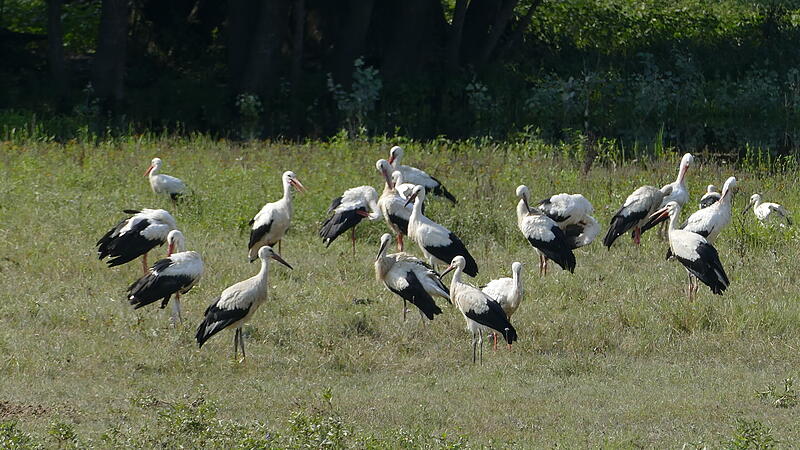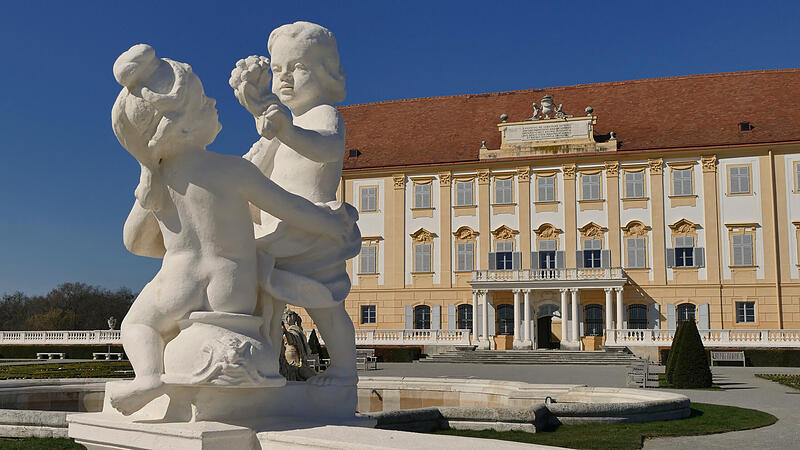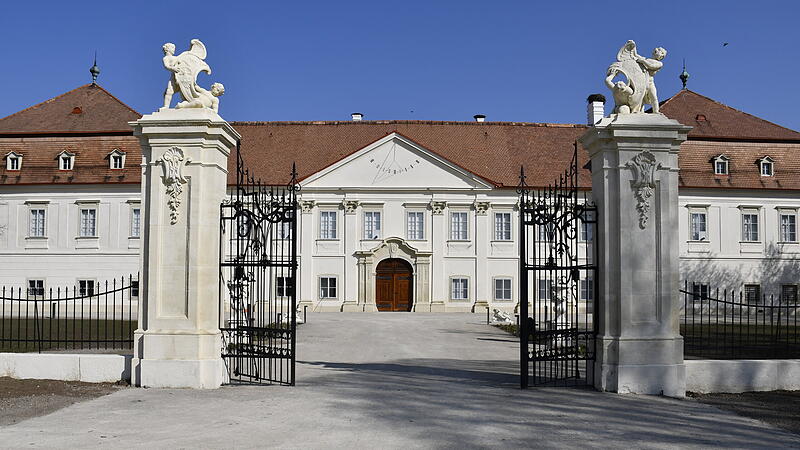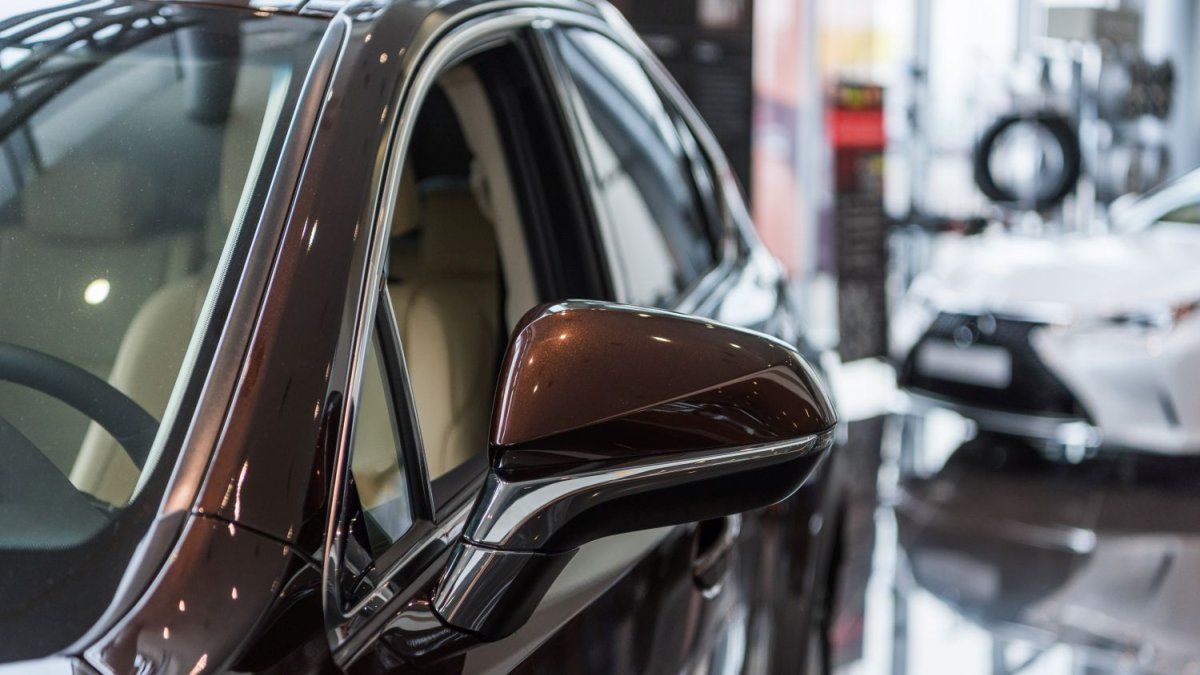When we arrive at Marchegg Castle, we are greeted with enthusiastic applause. As far as white storks can clap: they clatter their beaks down from their nests in a real staccato. We are honored. Until nature mediator Birgit brings us back down to earth: The welcome greeting of the rattle storks is certainly not for us, but for the conspecifics that have just landed.
The first stork arrived in the Marchegger Au this year on March 5th, which was precisely registered in the nature reserve. A male landed first, inspected the previous year’s nest, repaired it, and soon a female stork arrived. Offspring are expected for April. If the chimneys of the castle are occupied, other Adebare colonize the nests on the old oaks and whorled ash trees of the wetland behind. With around 50 pairs, Marchegg is home to the largest tree-nesting colony of white storks in Central Europe.


Neighbor’s fat frogs
The birds devour everything that crawls and flees and just fits in their beaks. Biologists call this feeding opportunism. To make it easier for the storks to find their meals in the grass, the nature park administration hired primeval Konik horses as organic lawn mowers. Despite the laid table, some storks fly away, sleeping in Austria but having lunch in the neighboring Slovakian floodplain on the other side of the March. There are said to be particularly fat frogs there. And the Adebare need hearty food to keep going on their 10,000-kilometer long-distance flight to East and South Africa, which they set off on in mid-August.
But this year there is much more to discover in Marchegg, as the Lower Austrian State Exhibition 2022 is taking place in the renovated castle, which belonged to the Hungarian princely family Pálffy from Erdöd for more than three centuries. Under the title “Marchfeld Secrets”, the show presents a diverse piece of Austria between the capitals of Vienna and Bratislava. The Marchfeld is a granary and vegetable garden – the asparagus season is about to start again – as well as dunes and floodplain landscapes, plus an oil production area. And often enough it was a hotly contested, wildly disputed border region, which only became more important again with the opening of the East.
bulwark against the Hungarians
“Conditor urbis Marchegg” is written on the base of the monument, which of course does not represent an “Urbis Conditor”, as Friedrich Torberg jokingly called the city confectioner Demel at Vienna’s Kohlmarkt, but Premysl Otakar II, who founded the settlement as a bulwark against the Hungarians ; a good part of the medieval city wall is still intact and you can walk along it. But as we know at least since Grillparzer’s tragedy, King Ottokar of Bohemia not only found happiness here, but also his tragic end in 1278 in the nearby battle between Dürnkrut and Jederspeigen. With his victory, Rudolf von Habsburg laid the foundation for the rise of the House of Austria. Is it coincidence that the star of the dynasty died out here, too, 640 years later? Emperor Karl I set out for exile from the Marchfeld Castle in Eckartsau. 100 years ago, on April 1, 1922, he died in Madeira.
The Vysomarch bicycle bridge, which elegantly spans the river at Marchegg and expands the Marchfeld excursion options to include the “Hinterbergland”, is only a few days old. This is exactly what Záhorie means, the Slovak name of the region east of the Morava, which means the area behind (from our point of view: before) the Little Carpathians. Together with the “Bicycle Bridge of Freedom” at Schloss Hof in the south and the ferry from Angern to Záhorskà Ves in the north, this results in attractive circular routes for cyclists from here and there, partly on the Iron Curtain Trail, which lead to the Tebener Kogel, the Pálffy – Stupava Castle or to the Marianka pilgrimage site. Insurmountable gradients are not to be feared in the brettleben Marchfeld, at most non-electrified bikers could be blown away by the wind.


Hof Castle should not be a stopover on such an excursion, but rather a stage destination as the largest of the Marchfeld Castles. Founded in the Middle Ages as Veste Hof, the building passed through several hands until Prince Eugene of Savoy acquired it and had it converted into a hunting lodge by Johann Lucas von Hildebrandt. The plague was over, the Ottomans defeated, baroque joie de vivre was indulged in uninhibitedly, the fetes of the “noble knight” were famous. The tame lion that Eugen used to greet his visitors may not have made many a guest feel comfortable; Schloss Hof’s current petting zoo looks much more harmless. The baroque garden, which extends over seven terraces that slope gently towards the March, is unique. And while strict symmetry still prevails here, the flower beds of the nearby “Dependance” Niederweiden already show the playful irregularity of the Rococo.
Another cycle path leads from Schloss Hof across the Marchfeld to Vienna. It follows the Rußbach, which is fed with Danube water from the Marchfeld Canal, which went into operation three decades ago to irrigate the region. Again and again, commemorative plaques on or near the cycle path refer to events in 1809 with a Napoleon bicorne logo. One reads with astonishment that the Grande Armée had not succeeded in crossing the narrow Rußbach. Ultimately, however, the Corsican defeated the Austrians under Archduke Carl near Wagram, where 300,000 soldiers fought in what was then the largest battle of the Napoleonic Wars. To this day, the remains of Frenchmen who fell “pour la gloire de la Patrie” rest in graves along the route – a glory that the men would probably have gladly renounced. When will they ever learn …
Napoleon’s first defeat
Of course, we remember the Austrian victory better than this defeat, which Archduke Carl had won six weeks before Wagram – ultimately in vain – at Aspern on the western edge of the Marchfeld. After all, it was Napoleon’s first military defeat, Carl was stylized as the “overcomer of the insurmountable” (Heinrich von Kleist), the victorious commander received an equestrian monument on Vienna’s Heldenplatz. And at the site of the costly battle, a dying sandstone lion, also created by Fernkorn, keeps watch, which is now allowed out of its winter cage, a protective wooden shack.
- Info: schloss.marchegg.at, marchfeld.weinviertel.at, weinviertel.at
Source: Nachrichten



